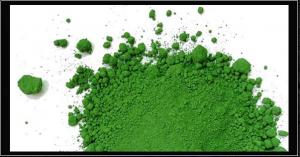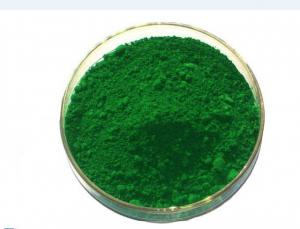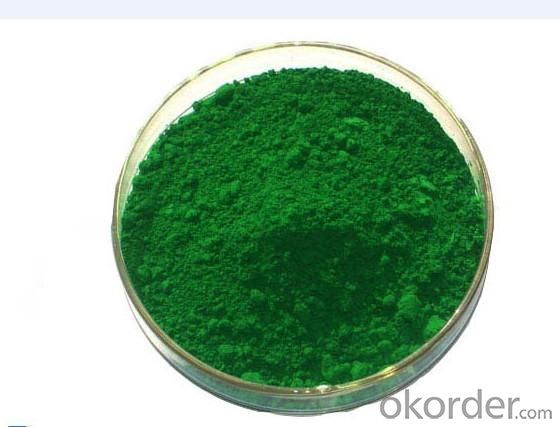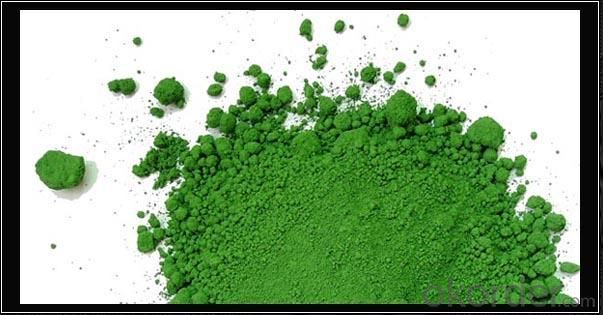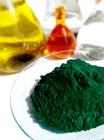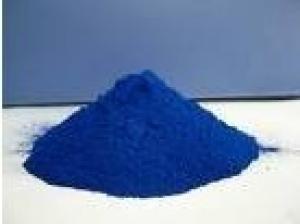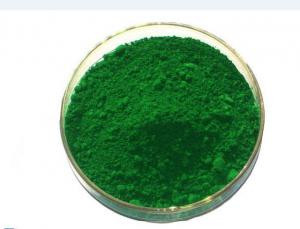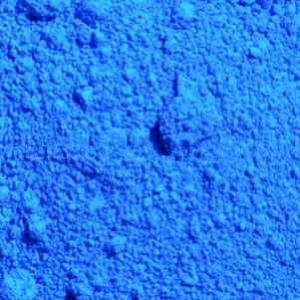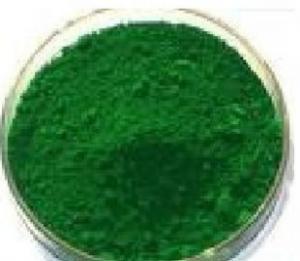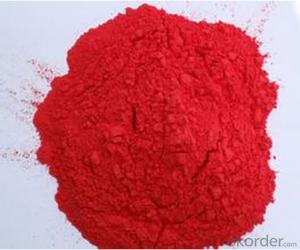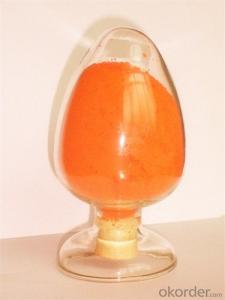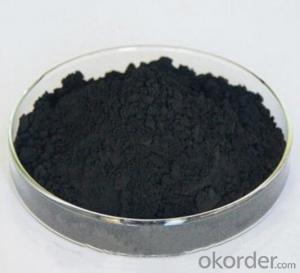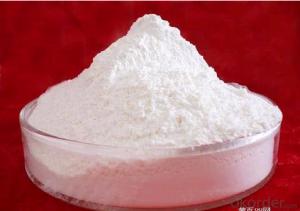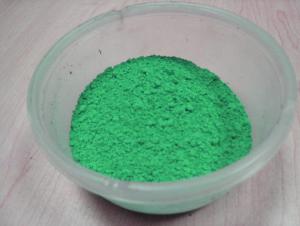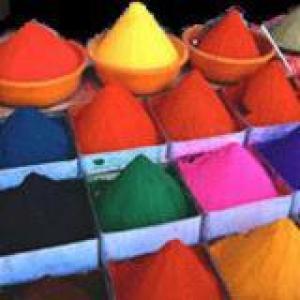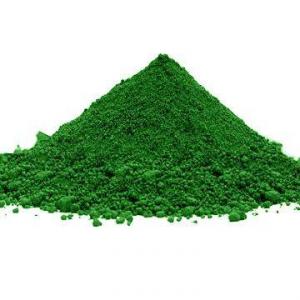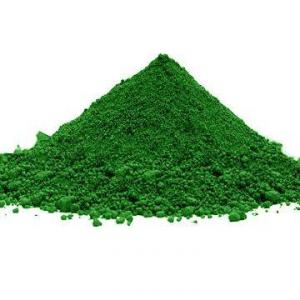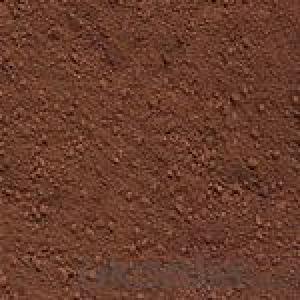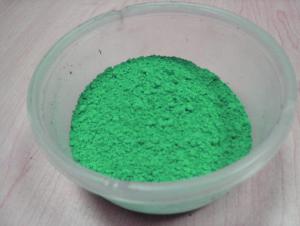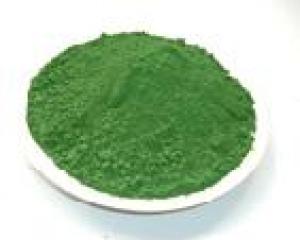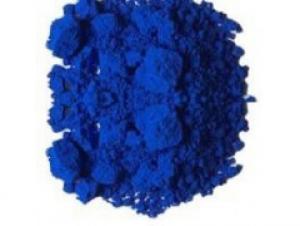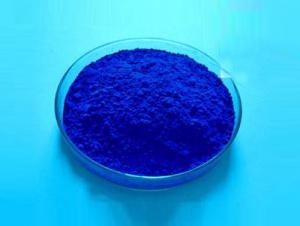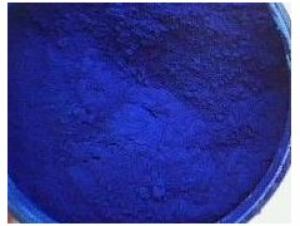Inorganic Green Pigments Chrome Oxide Green Refractory Grade
- Loading Port:
- Tianjin Port
- Payment Terms:
- TT or LC
- Min Order Qty:
- 1 Metric Ton m.t.
- Supply Capability:
- 8000MT Per Year m.t./month
OKorder Service Pledge
OKorder Financial Service
You Might Also Like
Product Details Of Chrome Oxide Green On Refractory Grade
1. Product Name: Chrome Oxide Green
2. Molecular Formula: Cr2O3
3. HS Code: 2819900000
4. CAS No. : 1308-38-9
5. Appearance: green powder
6. Specifications: (Quality Standard: HG/T 2775-1996)
Packing Details Of Chrome Oxide Green :
25 kg/ kraft bag or PP bag , or as your requirements .
Usage Of Chrome Oxide Green :
Mainly used in paint, glass, ceramics, building materials colorants, printing ink, metal polishing, smelting metal chromium, fire-proof material, etc.
Refractory Grade:
Item | Index | ||
Excellent Grade | First Grade | Qualified Grade | |
Cr2O3 ≥ | 99% | 98% | 97% |
Moisture ≤ | 0.15 | 0.3 | 0.5 |
Water Soluble ≤ | 0.1 | 0.4 | 0.7 |
Igloss ≤ | 0.6 | --- | ---- |
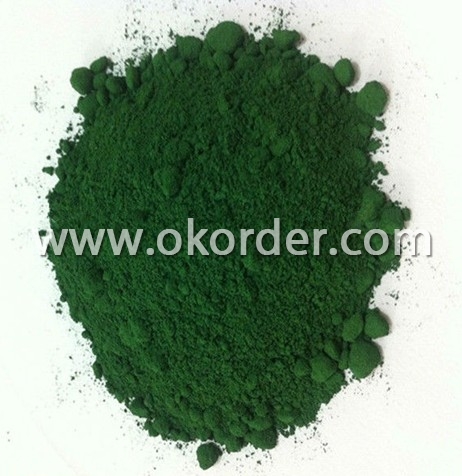
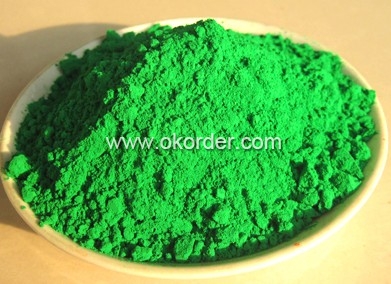
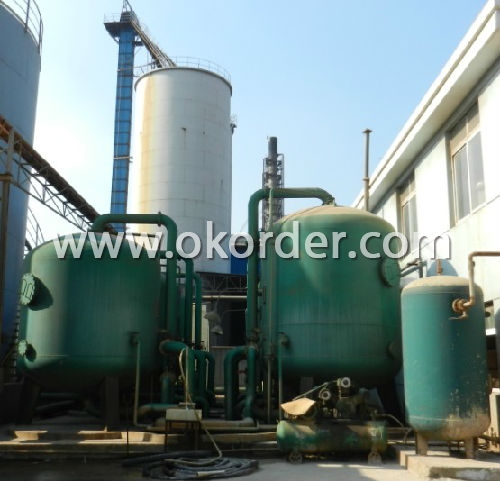
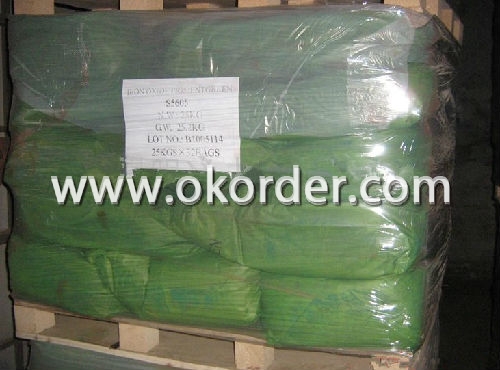
- Q: What is the difference between dyes and pigments? Could you give some examples of each one please.
- nan
- Q: thank you very much for your help!
- Pigments In Photosynthesis
- Q: what are the accessory pigments in plant photosynthesis?
- This Site Might Help You. RE: what are the accessory pigments in plant photosynthesis?
- Q: Explain light activation of pigments (absorption of light by pigments)?
- A pigment is a substance that imparts color by absorbing some frequencies of visible light but not others. For instance, there are a lot of substances that absorb ultraviolet light into the visible spectrum, in other words they also absorb plain violet light. Since they absorb violet light but reflect back the rest of light, they appear yellow. Purple pigments, on the other hand, are quite rare because they absorb purple light (which has the highest energy of visible light) and reflect back everything else. When anything absorbs a photon of electromagnetic radiation (light, x-rays, ultraviolet, infrared, microwaves, gamma rays, radio waves), it is activated which means that it takes the energy of the photon and goes to an energy state that is higher by the same amount of energy that was in the photon. At the molecular level, energy is quantized, meaning its restricted to particular states. For instance, vibrational energy corresponds to infrared light: there are only certain ways, called modes, that a molecule can vibrate in, if it can't vibrate in an appropriate mode, it can't absorb the infrared radiation that corresponds to being promoted to that mode. That's why substances can be transparent. At the higher energy state, the substance might be able to participate in chemical reactions that it would not be able to participate in in a lower state. That's usually what is meant by light activation. So a pigment that absorbs visible or UV light might become activated and react with something or react in ways that it wouldn't be able to in the dark.
- Q: How many pigments does grass reflect?
- Pigments are the colors that make grass look green. They are the pigments that do photosynthesis. Grass looks green because it reflects green light. It reflects the wavelengths of light that have the frequency of green light. Grass has other pigments that we do not see through the chlorophyll, but it is the light that is reflected.
- Q: What does it mean when something is highly pigmented?
- Pigment is the concentration of color in a substance of matter. So when something is highly pigmented it means that the color is vibrant and rich :)
- Q: Does anyone know its chemical formula or constituents ?
- Pigments are generally used for overdipping or decorating candles. Pigments do not fade and do not migrate/bleed, but pigments will clog wicks if used to color solid-colored candles. Pigment flakes are clean and easy to use and give vivid and brilliant colors. They are safe for the candlemaker and for the candlemaker’s customers. The pigment flakes comply with OSHA, TSCA and EN 071 (part 3) legislation. Pigments are insoluble in the medium they are coloring. Pigments, therefore, are not soluble in wax. They color the wax by dispersion. This means that pigments have to be distributed evenly throughout the wax, or dispersed in the wax, in order to color it (versus dyes which are soluble in wax and become a part of the wax to color it). Mixing, therefore, is very important. Usage and Dosage Instructions Dissolve pigments flakes in your wax formulation at approximately 185F - 85C. It is recommended to pre-disperse the required amount of color (see dosage chart) in a small amount of the dipping wax in a ratio of 1:5 color to wax. This should be done at 185F - 85C, using an electric mixer will disperse the color more quickly. Once the pigment is well dispersed, add it to the remaining dipping wax. Stir the dipping wax well before starting production and after each production break. Overdipping Dosage 2 dips : 1% by weight of wax formulation 1 dip : 1.5% by weight of wax formulation For color consistency, always add the same amount of color to your dipping wax. Use a scale to weigh the components of your dipping formulation. Always dip candles at the same temperature, temperature variations will result in color deviations. Too hot a dipping wax will make the shade of color on the candle appear lighter. Too cold a dipping wax will make the shade of color on the candle appear darker. Any variations in the overdipping wax used may result in a change of color on your finished candle. PROPER MIXING IS NECESSARY TO ACHIEVE UNIFORM DISPERSION OF PIGMENTS
- Q: how exactly do pigments work? i know that they absorb every color except the one that we see, but what are the exact physics or whatever behind the selective absorption of the light?
- Different pigments mostly absorb different range at different wavelength of light, but plant -as I know- mostly containing chlorophyll does not absorb green light so we see plants as green.
- Q: light absorption, which pigments are involved?
- All photosynthetic organisms contain one or more organic pigments capable of absorbing visible radiation, which will initiate the photochemical reactions of photosynthesis. The three major classes of pigments found in plants and algae are the chlorophylls, the carotenoids and the phycobilins. Carotenoids and phycobilins are called accessory pigments since the quanta (packets of light) absorbed by these pigments can be transferred to chlorophyll. Chlorophylls chlorophyll a - present in all higher plants and algae chlorophyll b - present in all higher plants and green algae chlorophyll c - diatoms and brown algae chlorophyll d - red algae (chlorophyll a is present in all photosynthetic organisms that evolve O2.) Chlorophyll molecules contain a porphyrin 'head' and a phytol 'tail'. The polar (water-soluble) head is made up of a tetrapyrrole ring and a magnesium ion complexed with the nitrogen atoms of the ring. The phytol tail extends into the lipid layer of the thylakoid membrane. Carotenoids (carotenes and xanthophylls) Carotenes: -carotene - higher plants and most algae $-carotene - most plants some algae xanthophylls: luteol, fucoxanthol and violaxanthol Carotenoids contain a conjugated double bond system of the polyene type (C-C=C-C=C). Energy absorbed by carotenoids may be transferred to chlorophyll a for photosynthesis. Phycobilins (found mostly in red and blur-green algae): phycoerythrin phycocyanin allophycocyanin )
1. Manufacturer Overview
| Location | Henan, China |
| Year Established | 1995 |
| Annual Output Value | Above US$100 Million |
| Main Markets | 20.00% North America 20.00% South America 10.00% Eastern Europe 10.00% Southeast Asia 10.00% Northern Europe 10.00% South Asia 10.00% Western Europe 5.00% Africa 5.00% Mid East |
| Company Certifications | REACH, ROSH,SVHC 53 Items Certificate ,SGS,CIQ,ISO9001:2008 |
2. Manufacturer Certificates
| a) Certification Name | |
| Range | |
| Reference | |
| Validity Period |
3. Manufacturer Capability
| a) Trade Capacity | |
| Nearest Port | Qingdao Port, China |
| Export Percentage | 51% - 60% |
| No.of Employees in Trade Department | 100 People |
| Language Spoken: | English; Chinese;Spainsh; Farsi;French;German |
| b) Factory Information | |
| Factory Size: | Above 600,000 square meters |
| No. of Production Lines | Above 3 |
| Contract Manufacturing | Design Service Offered; Buyer Label Offered |
| Product Price Range | Rock Bottom Price With Best Quality |
Send your message to us
Inorganic Green Pigments Chrome Oxide Green Refractory Grade
- Loading Port:
- Tianjin Port
- Payment Terms:
- TT or LC
- Min Order Qty:
- 1 Metric Ton m.t.
- Supply Capability:
- 8000MT Per Year m.t./month
OKorder Service Pledge
OKorder Financial Service
Similar products
Hot products
Hot Searches
Related keywords
